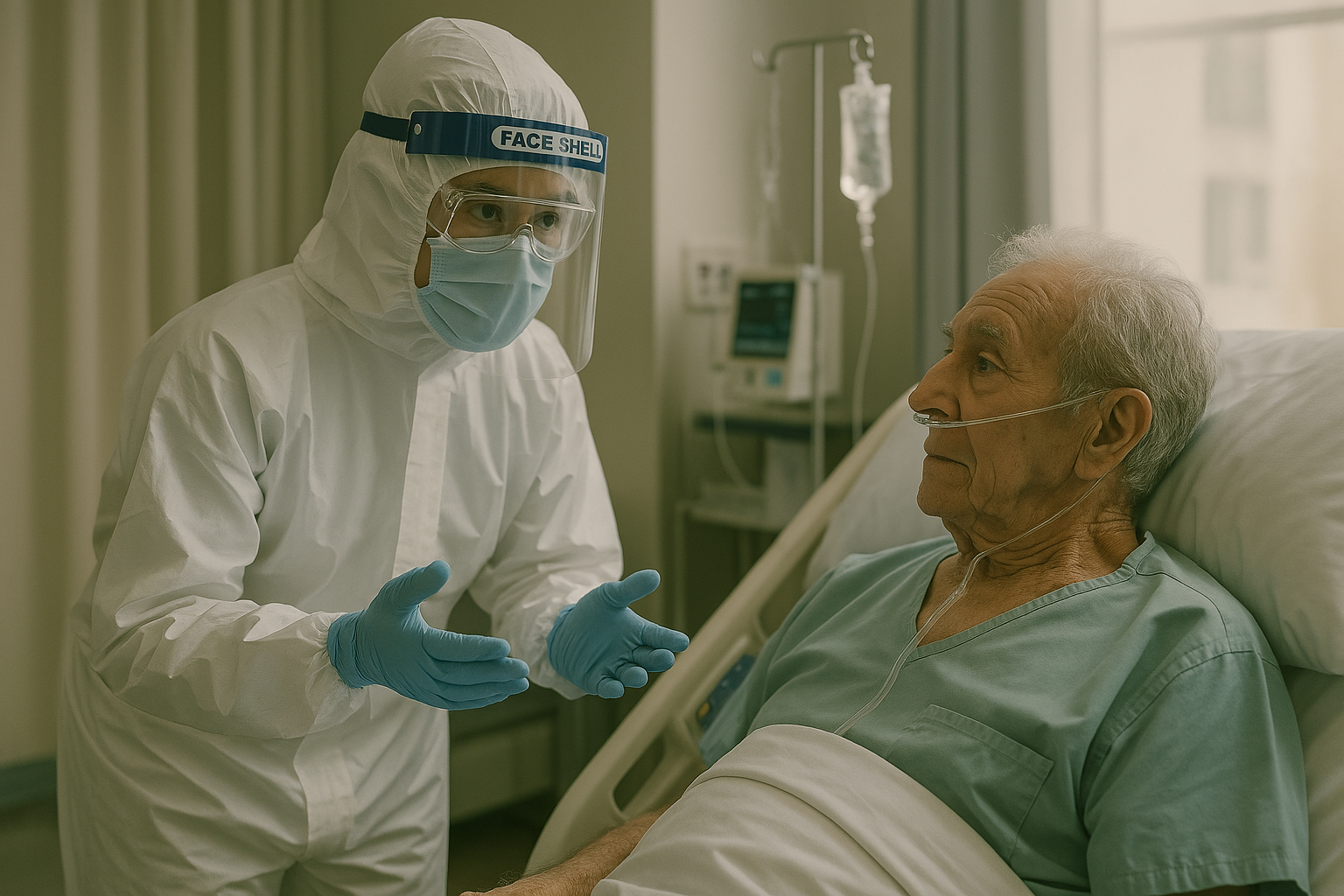In shorts:
- India has recently seen a rise in active COVID-19 cases, as reported by the Ministry of Health and Family Welfare.
- The resurgence includes new sub-variants of the Omicron strain, which are more transmissible.
- Although hospitalizations remain relatively low, precautionary measures are crucial to avoid another widespread outbreak.
- Understanding COVID-19, its variants, transmission, symptoms, and prevention methods remains important.
- Vaccination, public awareness, and timely health responses can help mitigate the severity of future waves.
Introduction
India is once again witnessing an increase in active COVID-19 cases. As of the latest update from the Ministry of Health and Family Welfare, the numbers have begun to climb steadily across several states. While this rise may not yet be cause for panic, it certainly demands caution, awareness, and a refresher on what we know about COVID-19. This blog will revisit the basics of the virus, explain what the new uptick means, and provide practical insights for staying safe in this changing health landscape.
What Is COVID-19? Understanding the Virus
COVID-19, short for Coronavirus Disease 2019, is an infectious disease caused by the SARS-CoV-2 virus. First detected in Wuhan, China, in late 2019, it spread rapidly across the world, leading to a global pandemic declared by the World Health Organization (WHO) in March 2020.
How the virus spreads:
- Through respiratory droplets when an infected person coughs, sneezes, or talks
- By touching surfaces contaminated with the virus and then touching the face
- In poorly ventilated or crowded spaces where airborne transmission may occur
Symptoms typically include:
- Fever
- Dry cough
- Fatigue
- Loss of taste or smell
- Difficulty breathing (in severe cases)
However, symptoms can vary from person to person and range from mild to severe.
A Quick Timeline: COVID-19 in India
- First Case: January 2020 in Kerala
- First Wave: March 2020 to September 2020
- Second Wave: April to June 2021 (Delta variant surge)
- Third Wave: Late 2021 to early 2022 (Omicron variant)
- Current Situation: Early signs of a resurgence in mid-2025, with mild but increasing case numbers
What’s Behind the Current Spike in Cases?
The recent rise in active cases can be attributed to a few factors:
A. Emergence of New Variants: New sub-lineages of the Omicron variant (like XBB.1.5 and EG.5) are known to be more transmissible, though often less severe in symptoms.
B. Pandemic Fatigue: People have largely stopped wearing masks and social distancing, which contributes to faster virus transmission.
C. Incomplete Vaccination and Waning Immunity: Some individuals missed booster doses or were never vaccinated, making them vulnerable again. Immunity from previous infections may also decrease over time.
D. Underreporting and Reduced Testing: With fewer people getting tested, actual case numbers may be much higher than reported.
Are We Facing Another Major Wave?
It is too early to say whether this rise will lead to a major outbreak like previous waves. However, experts believe that while hospitalizations and deaths remain low, the virus is far from gone.
Dr. Randeep Guleria, former AIIMS Director and COVID-19 Task Force member, suggests that the current variants are not as deadly but still require vigilance.
The Science of COVID-19 Variants
Viruses mutate over time. The SARS-CoV-2 virus has gone through several changes:
- Alpha, Beta, Gamma: Early variants with moderate impact
- Delta: Highly transmissible and severe, responsible for India’s deadly second wave
- Omicron: Extremely contagious but generally milder symptoms
- Subvariants (like XBB, BQ.1): Continue to evolve, posing risks of immune evasion
Understanding these mutations helps scientists develop better vaccines and treatments.
How COVID-19 Affects the Body
COVID-19 primarily attacks the respiratory system but can also affect the:
- Heart
- Brain
- Kidneys
- Blood vessels
In some cases, people experience Long COVID, a condition where symptoms persist for weeks or months after recovery.
Common Long COVID symptoms include:
- Chronic fatigue
- Brain fog
- Breathing difficulties
- Sleep disorders
Testing, Vaccination, and Treatment Updates
Testing:
- RT-PCR tests remain the gold standard
- Rapid antigen tests are widely available for quick results
Vaccination in India:
- Covaxin and Covishield were widely administered
- Booster doses and updated vaccines are essential for ongoing protection
- New mRNA-based and nasal vaccines are under development
Treatment Protocols:
- Mild cases: Isolation, rest, fluids, paracetamol for fever
- Moderate/severe cases: Antivirals like Remdesivir, oxygen support, and sometimes steroids
Prevention: What You Can Do Now
Follow these simple yet effective precautions:
- Wear masks in crowded places or during travel
- Wash hands regularly with soap or use hand sanitizer
- Maintain adequate ventilation indoors
- Avoid close contact with sick individuals
- Get tested if symptoms appear
- Stay up-to-date with vaccinations
Government Measures and Public Health Response
The Ministry of Health and Family Welfare has issued fresh advisories to states and union territories:
- Increase genome sequencing to track variants
- Boost hospital preparedness and oxygen supply
- Promote public awareness campaigns
- Resume mask mandates in sensitive zones
The Indian Council of Medical Research (ICMR) is also closely monitoring viral trends and issuing guidelines.
Mental Health and COVID-19
The pandemic has taken a toll on mental health as well. Anxiety, depression, and stress-related disorders have spiked. Key coping strategies include:
- Staying connected with loved ones
- Practicing mindfulness and relaxation techniques
- Limiting exposure to distressing news
- Seeking professional help when needed
Conclusion: Stay Alert, Not Alarmed
India’s recent increase in COVID-19 cases is a reminder that the virus is still with us. But it is also a testament to how much we have learned. The science is more robust, vaccines are effective, and public health systems are better prepared.
This is not the time for panic but for proactive steps. Staying informed, following basic hygiene, and getting vaccinated are our best defenses. Let’s not forget the lessons of the past. Together, we can ensure that the coming months do not repeat the horrors of previous waves but instead demonstrate how resilience and responsibility can shape a healthier future.









+ There are no comments
Add yours